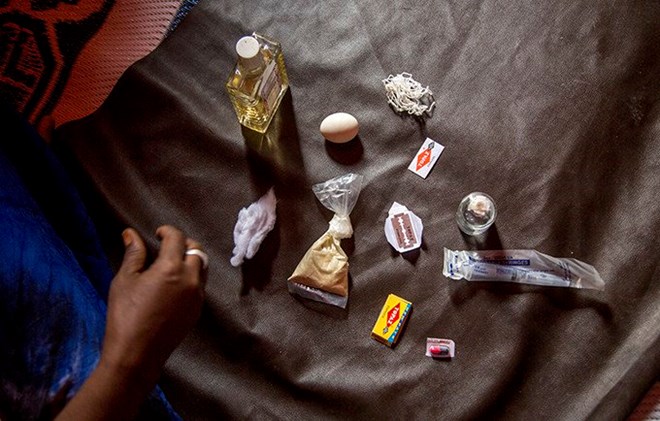
Thursday April 18, 2019

Asha* lays out the tools she uses to perform female genital mutilation in Somalia. © UNFPA/Georgina Goodwin
MOMBASA, Kenya (Xinhua) -- Countries from East Africa on Wednesday signed a declaration to eliminate Female Genital Mutilation (FGM) and in particular the one that has cross-border dimensions.
Senior officials from Ethiopia, Somalia, Tanzania, Uganda and Kenya signed the declaration at the end of a three-day meeting held in Kenya's resort city of Mombasa.
advertisements
Senior government officials from the five countries committed to supporting cross-border cooperation by facilitating information exchange on trends and good practices, establishing Standard Operating Procedures for girls and women at risk, law enforcement, and community dialogue."Enact and harmonize national laws and policy frameworks on Female Genital Mutilation through African Union, East African Community and Inter-Governmental Authority for Development," they said in a joint declaration.
Statistics indicate that more than 200 million girls globally have undergone FGM, including those in 30 countries in Africa.
Kenya, Ethiopia, Somalia, Tanzania and Uganda saw almost one quarter of the global burden of FGM, which means 48.5 million girls and young women, according to data from UNICEF, the UN children education fund.
According to findings from a report commissioned by UNICEF in collaboration with Kenya's Anti-FGM Board, 70 percent of respondents of the survey from Uganda, and 60 percent from Ethiopia, traveled to Kenya to undergo FGM.
Participants committed to eliminate the vice by strengthening regional coordination in the areas of legislation and policy framework, cooperation, communication and advocacy, evidence, research and data.
Kenya's Anti-FGM Board chairperson Agnes Pareiyo noted that factors that have contributed to cross-border FGM include shared traditions, fear of arrest, and lack of proximity to circumcisers, quality and affordability of FGM services, income sources of circumcisers, and absence of strong regional monitoring systems.
The national prevalence of FGM in Kenya has declined from 32 percent in 2003 to 27 percent in 2008 and 2009 to 21 percent in 2014, Pareiyo said.
Despite the decline nationally, she said, the prevalence among some practicing communities still remains high with Somalis at 94 percent, Samburu 86 percent, Kisii 84 percent, and Maasai 78 percent.
The officials noted that FGM is irreparable and irreversible abuse that poses a serious threat to the health of women and girls including their psychological, sexual and reproductive health, which can increase their vulnerability to HIV and adverse maternal and child health outcomes including death.
"Ultimate success of both national and cross-border programs will require continued political will, sustained advocacy and scaled-up programs and investment," said Anurita Bains, the acting deputy regional director for UNICEF.